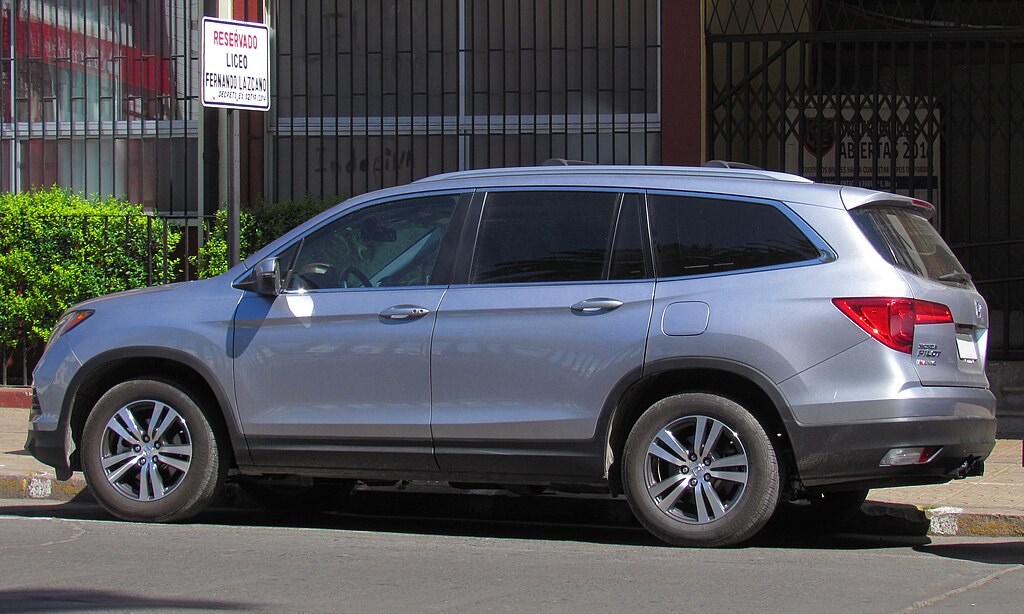The 2016 Honda Pilot introduced new transmission systems for smoother drives and better fuel efficiency. However, for many drivers, these changes came with a downside—transmission problems.
Rough shifting, slipping gears, and sudden failures have concerned many owners about their vehicle’s safety and reliability.
If you’re experiencing these headaches, don’t worry; there are solutions. Let’s discuss the common issues and what you can do to get your Pilot running smoothly again.

1. Jerky or Rough Shifting
A common complaint among 2016 Honda Pilot owners is rough or jerky shifting, especially at lower speeds. Drivers often notice this issue during acceleration between 20 to 30 mph, where the gear changes feel abrupt and uneven.
This rough shifting affects comfort and can create safety risks, as the vehicle may react unpredictably when speeding up or slowing down.
The problem tends to be more noticeable in colder weather or during stop-and-go driving, making it a regular hassle for daily commuters.
This issue often stems from problems with the Transmission Control Module (TCM) software. If the TCM isn’t correctly calibrated, the timing of gear changes can be off.
This is particularly an issue with the 9-speed automatic transmission found in higher trims like the Touring and Elite models. The complexity of this 9-speed setup can sometimes confuse gear selection, resulting in delayed or harsh shifts.
Many owners have sought help from dealerships, where a common fix is reprogramming the TCM, though this solution doesn’t always last.
2. Transmission Slipping and Delayed Acceleration
Another widespread issue is transmission slipping, where the engine revs, but the vehicle doesn’t accelerate as expected.
This can lead to a noticeable lag when pressing the gas pedal, followed by a sudden surge when the transmission finally engages.
Such delays can be dangerous, especially when merging onto highways or overtaking, as the delayed response can put drivers in risky situations.
Slipping often results from inadequate hydraulic pressure inside the transmission. When transmission fluid can’t maintain the required pressure, the internal clutches don’t engage properly, causing temporary power loss.
Software glitches in the control system can also prevent smooth gear changes. Many owners have described moments where their vehicle hesitates before suddenly lurching forward, adding to their safety concerns.
3. Transmission Failure and Sudden Stalling
More severe issues include complete transmission failure, leading to stalling without warning. Some 2016 Honda Pilot owners have reported losing power on highways, with the engine shutting down and leaving the car to coast to a stop.
Such occurrences pose a significant safety hazard, especially in fast-moving traffic where other drivers may not expect a sudden slowdown.
These failures are often linked to problems with the torque converter, a crucial part of the system that controls power transfer from the engine to the transmission.
A malfunctioning torque converter can prevent the vehicle from maintaining power, causing a total transmission shutdown. Other internal components like gears or solenoids can also wear out prematurely, leading to similar issues.
Many owners reported hearing strange noises or feeling vibrations before the transmission gave out, with warning lights appearing just before the vehicle stalled.
4. Delayed Response When Shifting from Park to Drive or Reverse
A further issue involves a delay when shifting from Park to Drive or Reverse. Drivers have reported that after selecting a gear, it can take several seconds before the vehicle moves, during which time the engine may rev, but the car remains stationary.
When the gear finally engages, it may do so with a sudden jolt, making for an unpredictable and uncomfortable experience.
This delay can be particularly troublesome in tight spaces like parking lots or driveways, where a sudden lurch could lead to minor accidents.
This problem often results from calibration issues within the TCM, which controls how quickly the transmission engages.
The condition of the transmission fluid can also be a factor; old or low-quality fluid might fail to provide the necessary lubrication, contributing to sluggish shifts.
5. Unintended Shifting into Neutral
Some owners of the 2016 Honda Pilot have experienced their transmission unexpectedly shifting into Neutral while driving.
This sudden disengagement leaves the engine running but unable to deliver power to the wheels, creating a potentially hazardous situation in the middle of traffic.
This problem is typically traced back to faults in the TCM, which may send incorrect signals that cause the gears to disengage. Issues with the vehicle’s electrical system, like faulty wiring or sensor failures, can disrupt normal operation.
While Honda has issued software recalls to address programming errors that might cause these unexpected shifts, some drivers report that the problem persists even after updates, suggesting deeper mechanical or electrical issues.
6. Transmission Overheating
Transmission overheating is another problem some 2016 Honda Pilot owners face, especially during long drives or while towing.
The vehicle may display warnings about high transmission temperatures, sometimes forcing it into “limp mode” to prevent damage. Limp mode restricts the vehicle’s power and speed, allowing the transmission to cool and limiting drivability.
Overheating often indicates insufficient cooling capabilities, which can be problematic when towing or driving through hilly areas.
Some owners have found relief by installing aftermarket transmission coolers to help manage the temperature. Still, others have been irritated by dealerships’ attributing the issue to normal operation and offering no long-term solutions.
Final Thoughts
Many owners of the 2016 Honda Pilot have faced multiple transmission challenges, sometimes dealing with more than one problem simultaneously.
While software updates can help with some issues, the transmission system’s complex nature means that solutions are not always straightforward.
Drivers who encounter persistent transmission problems may need to consider regular maintenance or even more significant repairs to maintain safe and reliable operation.
Being aware of these common issues and their potential fixes can help you manage the challenges of owning a 2016 Honda Pilot.
Was This Article Helpful?


shifts up and down in forty mile hour range